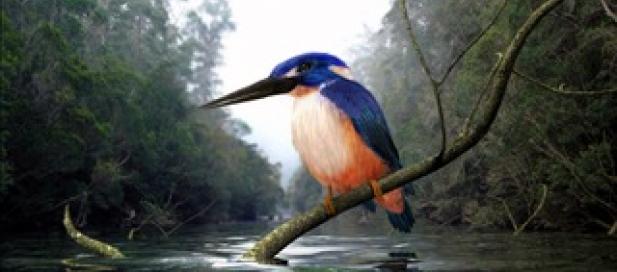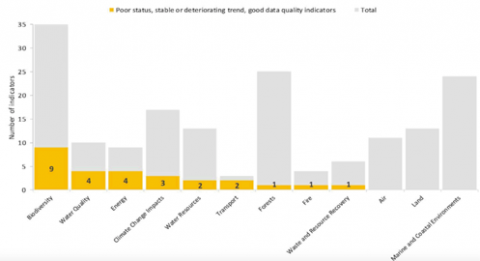
Photo: East Gippsland Landcare Network
Victoria’s comprehensive report card of the health of Victoria’s natural environment, the Victorian State of the Environment (SoE) 2018 Report, has been released. Commissioner for Environmental Sustainability Dr Gillian Sparkes has recommended the introduction of a Chief Biodiversity Scientist to improve biodiversity outcomes in the state. “A Chief Biodiversity Scientist could coordinate biodiversity strategy across the state and provide support to the DELWP Secretary and the Minister for Environment as they implement the Protecting Victoria’s Environment – Biodiversity 2037 plan,” says Dr Sparkes.
The SoE 2018 reports on 35 biodiversity indicators including trout cod populations, vertebrate groups (including reptiles) and deer populations. “More than three quarters of biodiversity indicators are trending negatively,” says Dr Sparkes. “A Chief Biodiversity Scientist for Victoria would enable better curation, coordination and tailoring of biodiversity science and research by the Victorian government to maintain and improve Victoria’s biodiversity on public and private land.”
| Trend | Biodiversity |
| Improving | 1 |
| Stable | 7 |
| Deteriorating | 18 |
| Unclear | 9 |
| Grand Total | 35 |
Source: SoE 2018 Report
Victoria has a growing list of endangered species including the Mountain Pygmy Possum, the Baw Baw Frog and the Murray Crayfish and increasing numbers of pest, plants and animals such as deer, carp, cats, foxes and rabbit that are destroying natural ecosystems.

The SoE 2018 Report also highlights the need to stem the rate of biodiversity loss on private land. Victoria has nearly 23 million hectares of land - public land accounts for 37% and private land 63%. (VEAC, 2016. Statewide Assessment of Public Land Discussion Paper. Victorian Environmental Assessment Council, East Melbourne, Victoria.) Private land conservation through permanent protection has been increasing across the State. However, it occurs at a slower rate than biodiversity loss and needs to be addressed as a priority over the next decade.
The largest contributors to net loss in native vegetation in private land include entitled uses such as a grazing and removal of trees for personal use; unmanaged threats such as pest plants; and clearing that does not require a permit such as creating fences or for fire protection. The Commissioner has recommended an acceleration of private land conservation. “This will require resourcing permanent protection measures that focus on high-priority ecosystems and landscapes, and investing in local government capability to enforce the existing guidelines for the removal, destruction or lopping of native vegetation and the Invasive Plants and Animals Policy Framework.”
The Chief Biodiversity Scientist would support Victoria to not only monitor what is happening but move into a more predictive capacity to harness the full complement of resources that the Victorian Government has already invested in for greater impact. Says Dr Sparkes: “A Chief Diversity Scientist would enable coherent biodiversity science to make sure that we get the scientific information we need in the right timeframes.”
